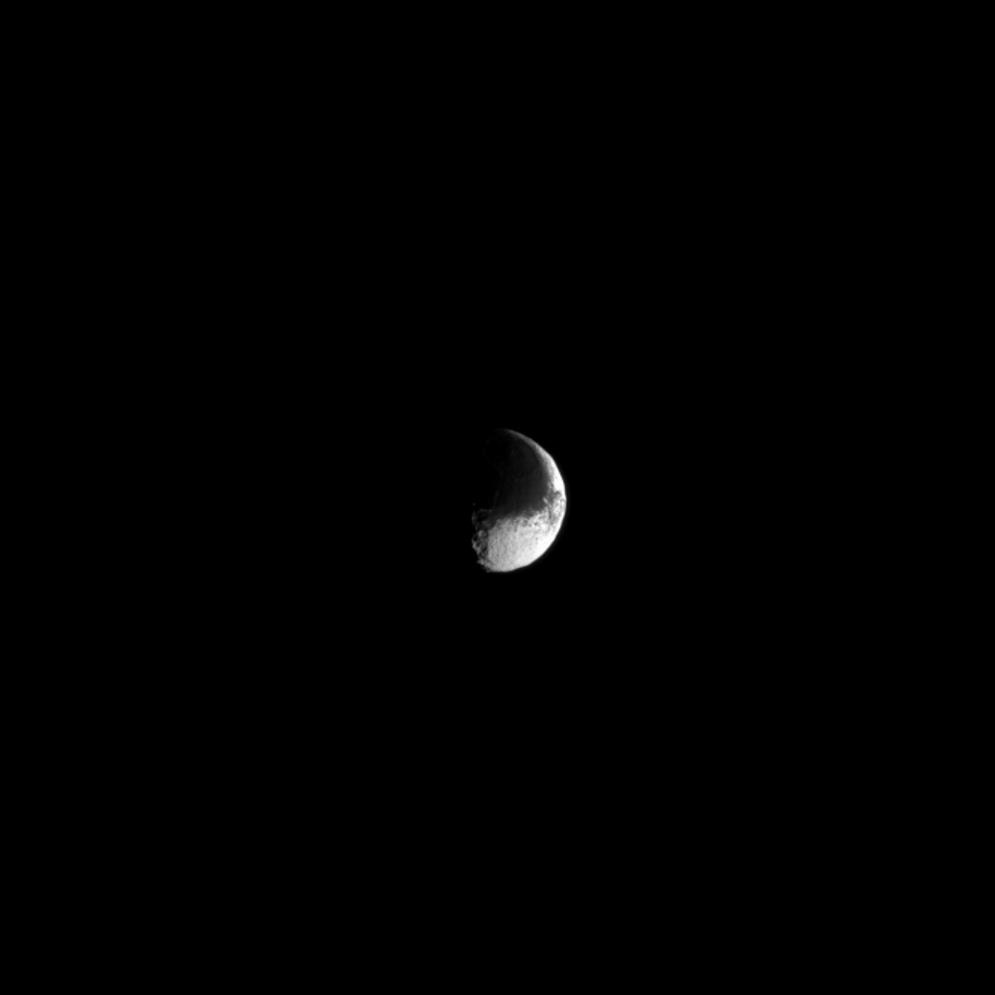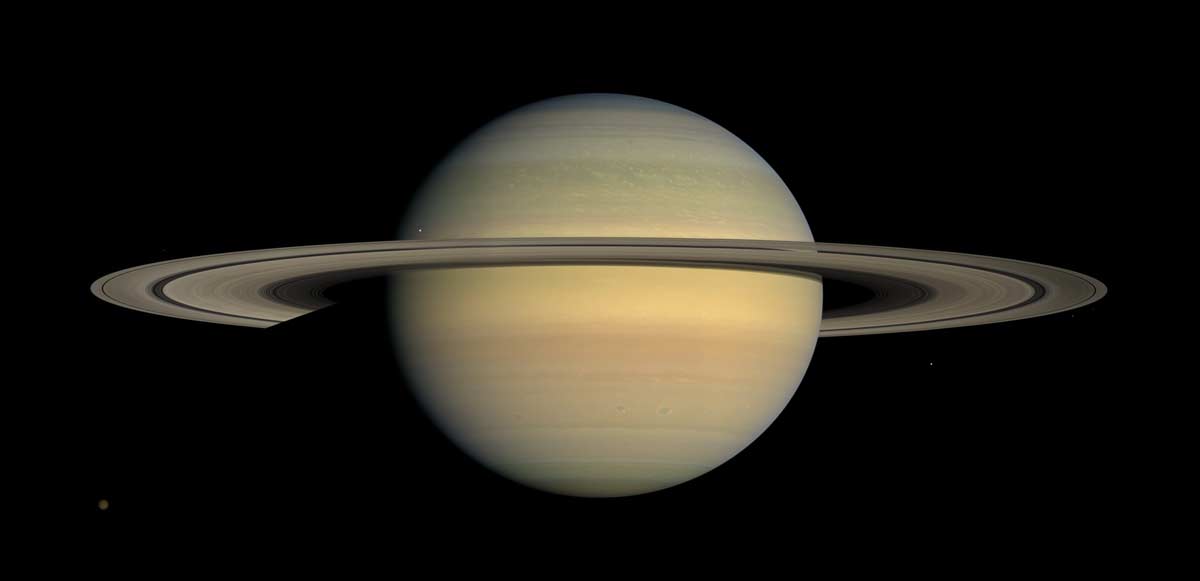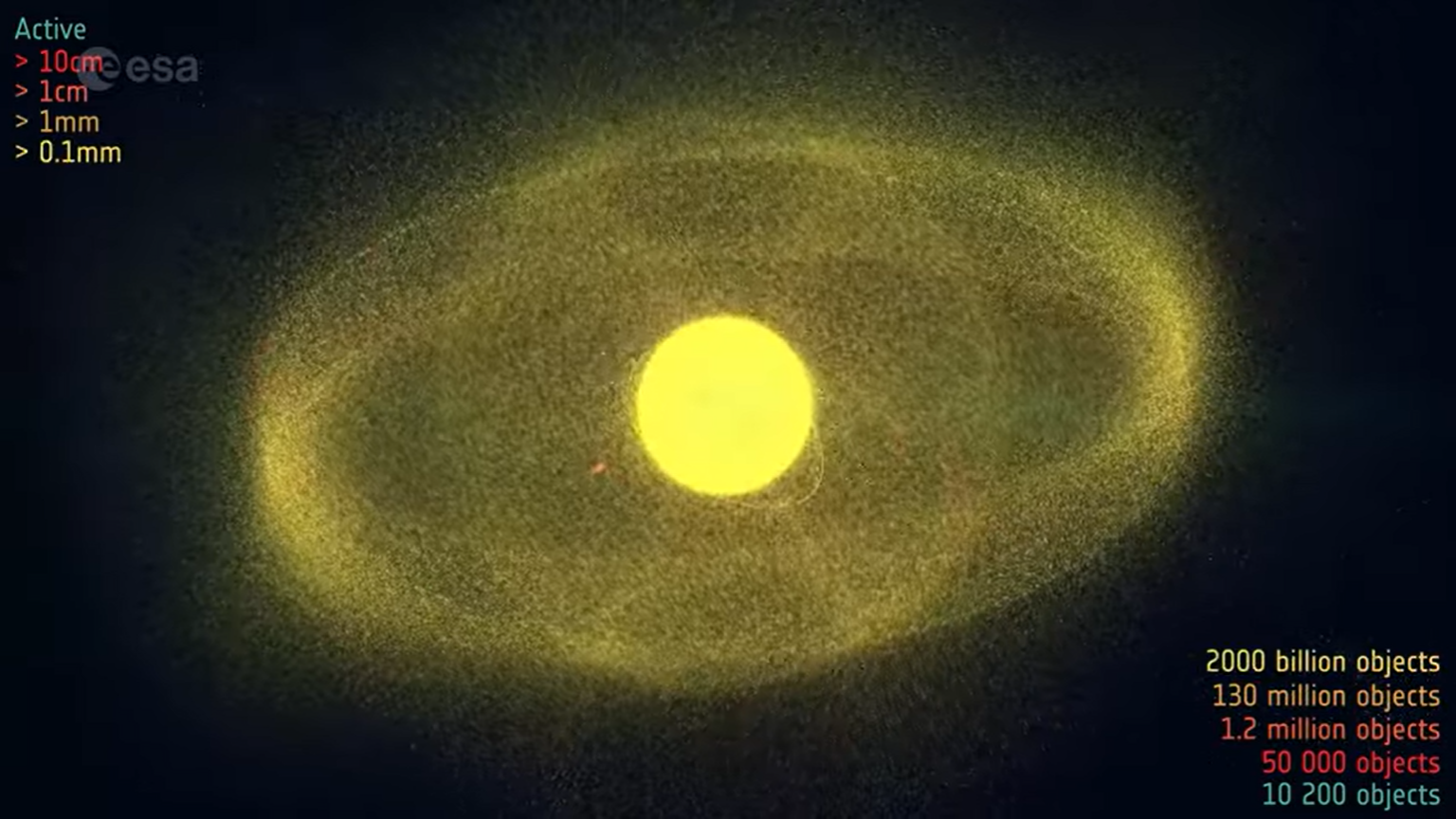Saturn's 'Yin and Yang' Moon Shines in NASA Photo

Call it cosmic zen. Yin and yang appear to meet on one of Saturn's moons in a photo taken by a spacecraft exploring the ringed planet and its many moons.
The new Cassini photo of Saturn's moon Iapetus shows the satellite's dark and light sides as comma-shaped features that bear a striking resemblance to the yin and yang symbol in Chinese philosophy. The image was released in December, but actually taken by the Cassini spacecraft in August.
"This view looks toward the Saturn-facing hemisphere of Iapetus," NASA officials wrote in an image description. "North on Iapetus is up and rotated 30 degrees to the right. The image was taken in visible light with the Cassini spacecraft narrow-angle camera on Aug. 30, 2013." [Photos: The Rings and Moons of Saturn in Pictures]
Some scientists think that the two faces of Iapetus probably get their distinct appearances from the moon's slow rotation, meaning that the dark surfaces of the moon absorb more heat and have time to warm. Any icy materials that mix with the hotter surfaces turn gaseous and then fall back into the cooler regions, meaning that the dark side gets darker while the bright side becomes brighter.
Giovanni Cassini first spotted Iapetus in 1672. The odd moon is shaped somewhat like a walnut, with a huge ridge running along its equator. It's likely that the ridge was created when a giant impact flung chunks of Iapetus out into space at the end of its planetary growth more than 4.5 billion years ago.
The debris may have re-formed around the moon, creating a new moon orbiting Iapetus. Eventually, Iapetus' gravity tore its moon apart and the rubble rained down, creating the moon's distinctive ridge.
It's also possible that the ridge formed early in the moon's history when it was spinning more quickly than it does now.
Breaking space news, the latest updates on rocket launches, skywatching events and more!
The Cassini spacecraft launched in 1997 and made it into orbit around Saturn in 2004. The spacecraft is expected to continue studying Saturn and its moons until 2017, after which it will burn up in Saturn's atmosphere.
Follow Miriam Kramer @mirikramer and Google+. Follow us @Spacedotcom, Facebook and Google+. Original article on SPACE.com.

Miriam Kramer joined Space.com as a Staff Writer in December 2012. Since then, she has floated in weightlessness on a zero-gravity flight, felt the pull of 4-Gs in a trainer aircraft and watched rockets soar into space from Florida and Virginia. She also served as Space.com's lead space entertainment reporter, and enjoys all aspects of space news, astronomy and commercial spaceflight. Miriam has also presented space stories during live interviews with Fox News and other TV and radio outlets. She originally hails from Knoxville, Tennessee where she and her family would take trips to dark spots on the outskirts of town to watch meteor showers every year. She loves to travel and one day hopes to see the northern lights in person. Miriam is currently a space reporter with Axios, writing the Axios Space newsletter. You can follow Miriam on Twitter.

